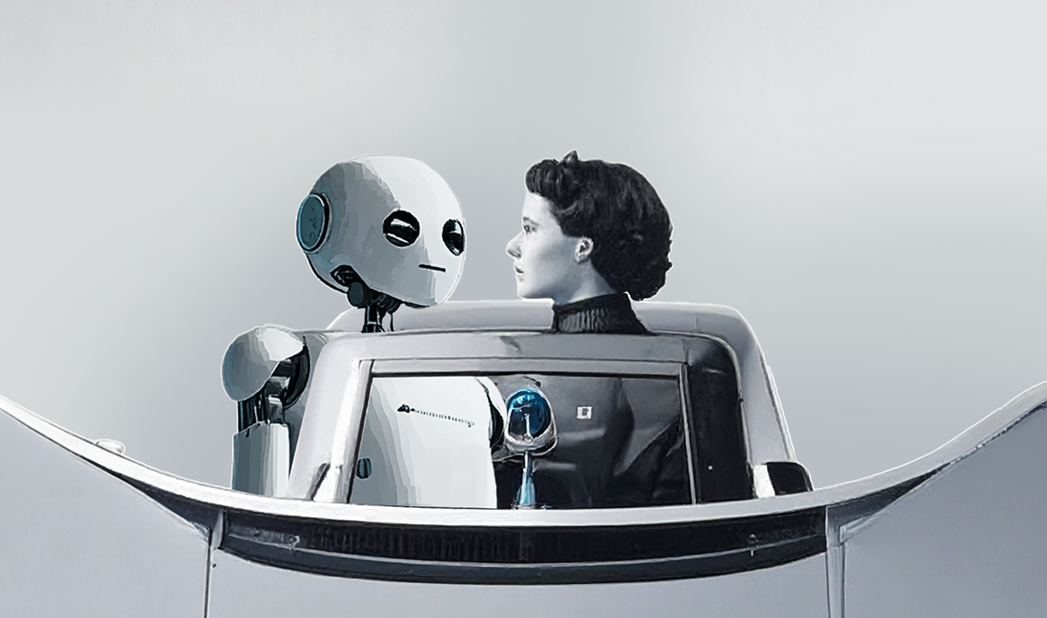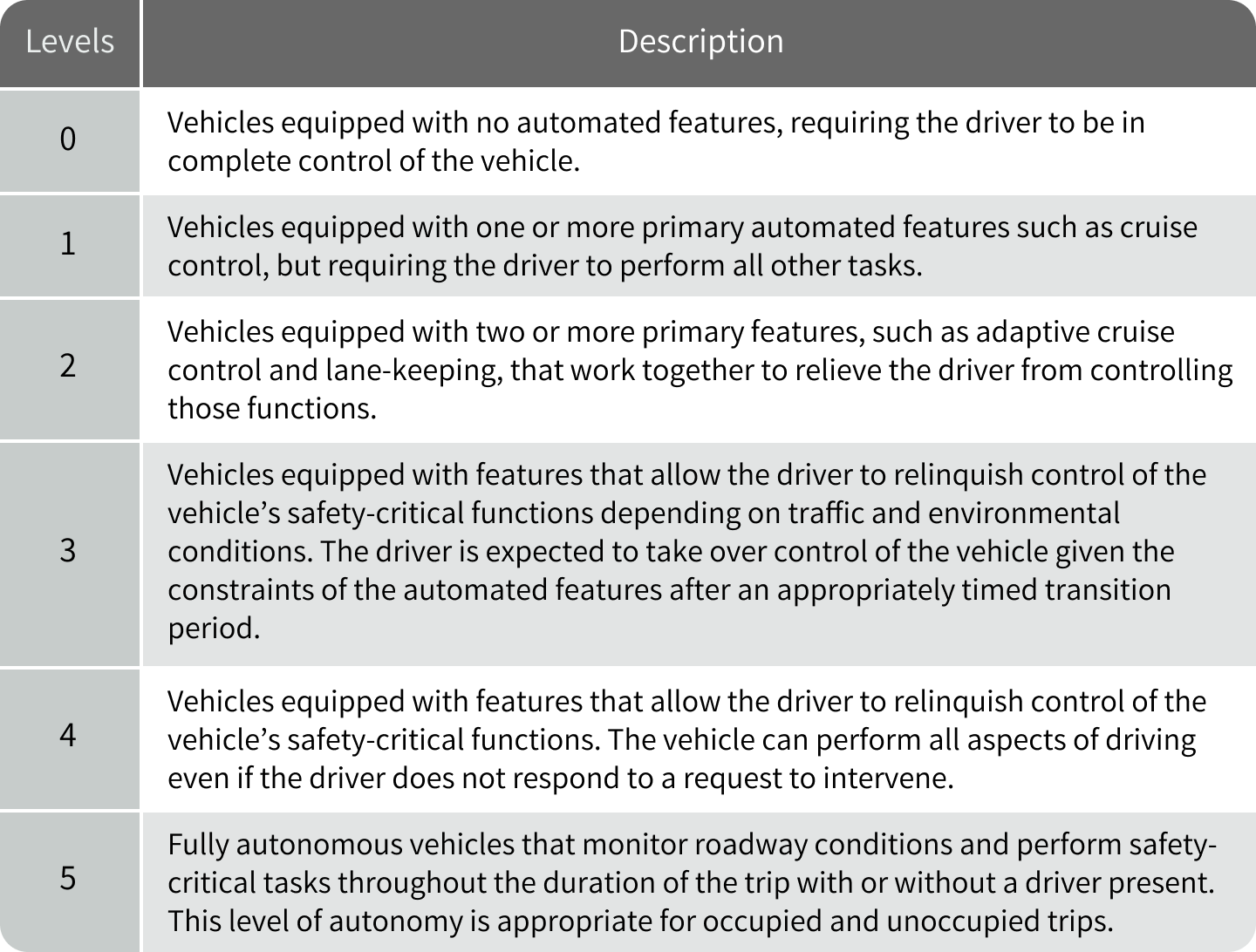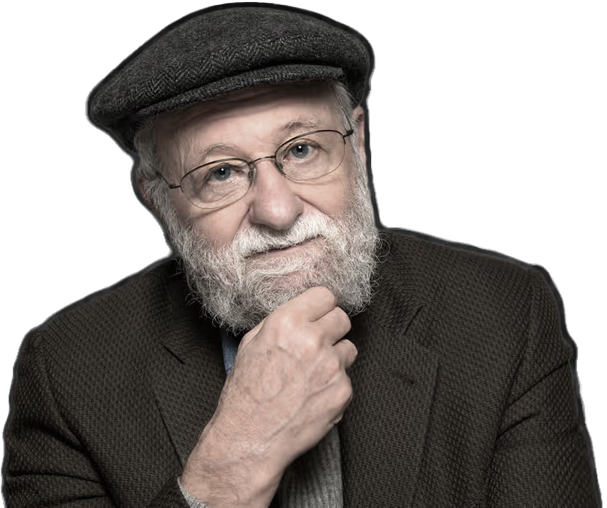Abstract
The development of autonomous vehicles (AVs) has transformed from a centuries-old dream into a contemporary design and technological challenge. While Leonardo da Vinci’s 16th-century self-propelled cart may be seen as the conceptual origin, meaningful progress began in the 20th century with radio-controlled prototypes and has since evolved into AI-driven systems navigating real-world environments. Autonomous vehicles are classified by the Society of Automotive Engineers (SAE) into six levels, from Level 0 (no automation) to Level 5 (full automation), with current legal frameworks such as the Uniform Automated Operation of Vehicles Act focusing primarily on Levels 3 to 5.
This research examines the key design-related debate: Should designers prioritize fully autonomous experiences, or preserve elements of human control and decision-making? I argue that maintaining some degree of human agency within autonomous systems is essential, not only for emotional engagement and user trust but also for ethical accountability. As self-driving technology matures, designers increasingly face decisions about how control, responsibility, and transparency are distributed between human users and intelligent systems.
Drawing from a historical timeline, legal frameworks, and voices from design and adjacent fields—including Chris Urmson, Bryant Walker Smith, Gillian Hadfield, Donald Norman, and Meredith Broussard—this study critically reflects on how designers can shape the future of mobility. The road ahead is not only a technical path but also a human one: the challenge lies in designing a system where humans and AI can safely and meaningfully coexist.
Design-related debate question
Should designers prioritize fully autonomous experiences, or should they preserve elements of human control and decision-making?

My perspective
While full autonomy promises safety and efficiency, I believe preserving human agency is essential for trust, transparency, and ethical accountability. Designers must create systems that clearly communicate with users, making automation feel understandable—not alienating. Autonomy should enhance, not erase, the human experience behind the wheel.
Definitions
What Is An Autonomous Vehicle?
An autonomous vehicle, also known as a self-driving or driverless car, is a vehicle that can navigate and operate without human intervention, using a combination of sensors, cameras, radar, and artificial intelligence. These vehicles utilize advanced technologies to perceive their surroundings, make real-time decisions, and execute driving actions like steering, braking, and accelerating.
The Society of Automotive Engineers (SAE) defines six levels of driving automation, ranging from Level 0 (no automation) to Level 5 (full automation). Level 0 involves no automation, with the driver fully responsible for all driving tasks. Level 5 represents full automation, where the vehicle can handle all driving tasks in all conditions.

The Uniform Automated Operation of Vehicles Act addresses a narrow but foundational set of the many legal and policy issues raised by automated driving. The Uniform Automated Operation of Vehicles Act only applies to vehicles that fall within SAE Levels 3 to 5 and leaves vehicles that fall within SAE Levels 0 to 2 to existing law. This act also answers a foundational question about the deployment of automated vehicles – who is considered the “driver” when an automated vehicle is under automated operation? Under the Uniform Automated Operation of Vehicles Act, the “driver” in these situations is the automated driving provider.
History
How long have people been dreaming of autonomous vehicles?
The dream of self-driving vehicles stretches back centuries. As early as the 16th century, Leonardo da Vinci designed a self-propelled three-wheeled cart powered by springs and pre-programmed steering — a visionary concept far ahead of its time. However, the journey toward truly autonomous cars didn’t gain serious momentum until the early 20th century.
1920s
Radio-controlled car “American Wonder”
Houdina Radio Control Co.
Crash during a public demonstration in 1925
1930s
Concept of radio-controlled electric cars guided by electromagnetic fields
General Motors (sponsor of Norman Bel Geddes’ Futurama exhibit)
High infrastructure costs prevented large-scale implementation
1950s
Test highways embedded with sensors; electronic guidance systems
RCA Labs, General Motors
Lack of funding halted development
1960s
Computer-controlled lunar surface vehicle prototype (Stanford Cart)
Stanford University
1970s
First passenger vehicle using built-in camera-based environmental analysis
University of Tsukuba (Japan)
Canonical voices

Chris Urmson
CEO and co-founder of Aurora Innovation; former lead engineer of Google’s self-driving car project (now Waymo)
He envisions a future where self-driving technology can reduce accidents, improve mobility for elderly and disabled people, and reshape urban infrastructure. He believes full autonomy is inevitable but emphasizes a phased, safe rollout.
Bryant Walker Smith
Legal scholar, University of South Carolina; leading expert in the law and ethics of autonomous vehicles.
Smith highlights that technology is advancing faster than regulatory frameworks. He stresses that laws, ethics, and social systems must evolve alongside technical innovation.


Gillian Hadfield
Professor of Law and Strategic Management; specialist in regulation, legal design, and AI governance.
Hadfield emphasizes that self-driving cars require new regulatory models, not just updates to old ones. The complexity of autonomous systems demands adaptive, participatory regulation processes.
Donald Norman
Cognitive scientist, design theorist, author of The Design of Everyday Things; advocate for human-centered design.
Norman stresses the importance of designing transparent, explainable autonomous systems so that users understand what a self-driving car is doing and why. He argues that interaction between humans and AI must be predictable.


Meredith Broussard
Data journalism professor and author of Artificial Unintelligence
Broussard is skeptical about the grand promises of AI, including self-driving cars. She believes that techno-solutionism often ignores structural social issues like inequality and access.
Dara Khosrowshahi
CEO of Uber Technologies Inc. Under his leadership, Uber has expanded its investment in autonomous vehicle technologies.
He has stated that in the future, a mixed fleet of human drivers and autonomous vehicles will coexist, with AVs serving high-demand areas and predictable routes, while human drivers handle more complex or less structured trips.

Author biography
The author is a multidisciplinary designer and Master of Design student at UC Berkeley, specializing in user experience, interaction design, and technology-driven futures. With a background in industrial design and a growing interest in AI ethics and mobility systems, her work explores the intersection between human behavior, emerging technologies, and thoughtful design.
This ZINE is part of her ongoing inquiry into how autonomous vehicles are not just engineering challenges, but design provocations—inviting us to rethink control, responsibility, and the road ahead.

Bibliography
[1] Mobileye, “A Brief History of Autonomous Vehicles – from Renaissance to Reality | Mobileye Blog,” Mobileye, Feb. 27, 2023. https://www.mobileye.com/blog/history-autonomous-vehicles-renaissance-to-reality/
[2] E. Garsten, “What Are Self-Driving Cars? the Technology Explained,” Forbes, Jan. 23, 2024. https://www.forbes.com/sites/technology/article/self-driving-cars/
[3] SAE International, “Taxonomy and Definitions for Terms Related to Driving Automation Systems for On-Road Motor Vehicles - SAE International,” www.sae.org, Apr. 30, 2021. https://www.sae.org/standards/content/j3016_202104/
[4] “A Brief History of Automated Driving — Part Two: Research and Development,” Apex.AI, Jun. 02, 2020. https://www.apex.ai/post/a-brief-history-of-automated-driving-part-two-research-and-development
[5] C. Engelking, “The ‘Driverless’ Car Era Began More Than 90 Years Ago,” Discover Magazine, Dec. 13, 2017. https://www.discovermagazine.com/technology/the-driverless-car-era-began-more-than-90-years-ago
[6] robintek, “Explore the History of Self-Driving Cars │ S-E-A, Ltd.,” SEA, Ltd., Jul. 31, 2019. https://sealimited.com/from-concept-to-reality-the-impressive-history-of-self-driving-cars/
[7] M. Warr, “Designing for Systemic Change: Self-Driving Cars? | Talking About Design,” Talking About Design, Aug. 18, 2020. https://talkingaboutdesign.com/designing-for-systemic-change-self-driving-cars/
[8] C. Urmson, “How a driverless car sees the road,” www.ted.com, 1435. https://www.ted.com/talks/chris_urmson_how_a_driverless_car_sees_the_road/transcript
[9] W. Schwarting, J. Alonso-Mora, and D. Rus, “Planning and Decision-Making for Autonomous Vehicles,” Annual Review of Control, Robotics, and Autonomous Systems, vol. 1, no. 1, pp. 187–210, May 2018, doi: https://doi.org/10.1146/annurev-control-060117-105157.
[10] A. I. Inc, “Moving us Towards a Self Driving Future,” aurora.tech, 2024. https://aurora.tech/
[11] “Gatik,” gatik.ai. https://gatik.ai/
[12] “Home - Kodiak Self-Driving Trucks,” Kodiak. https://kodiak.ai/
[13] “Einride – Intelligent technologies for movement,” www.einride.tech. https://www.einride.tech/
[14] J. Muller, “Uber to add Volkswagen robotaxis to its growing AV fleet,” Axios, Apr. 24, 2025. https://www.axios.com/2025/04/24/uber-volkswagen-autonomous (accessed May 01, 2025).
[15] D. Zukowski, “Uber CEO outlines robotaxi fleet plan,” Smart Cities Dive, Feb. 06, 2025. https://www.smartcitiesdive.com/news/uber-ceo-khosrowshahi-outlines-plan-robotaxi-av-fleet/739396/ (accessed May 01, 2025).
[16] “The Human Side of Automation,” Don Norman’s JND.org, Dec. 25, 2014. https://jnd.org/the-human-side-of-automation/ (accessed May 01, 2025).
[17] B. W. Smith, “Automated Vehicles Are Probably Legal in the United States,” Texas A&M Law Review, vol. 1, no. 3, pp. 411–521, Jan. 2014, doi: https://doi.org/10.37419/lr.v1.i3.1.
[18] B. W. Smith, “Ethics of Artificial Intelligence in Transport,” papers.ssrn.com, Feb. 24, 2019. https://papers.ssrn.com/sol3/papers.cfm?abstract_id=3463827
[19] “Gillian Hadfield: Normative Infrastructure for AI Safety and Alignment,” Stanford Digital Economy Lab, Mar. 09, 2024. https://digitaleconomy.stanford.edu/event/gillian-hadfield-normative-infrastructure-for-ai-safety-and-alignment/ (accessed May 01, 2025).
[20] G. K. Hadfield and J. Clark, “Regulatory Markets: The Future of AI Governance,” arXiv.org, Apr. 25, 2023. https://arxiv.org/abs/2304.04914
[21] M. Broussard, “Self-Driving Cars Still Don’t Know How to See,” The Atlantic, Mar. 20, 2018. https://www.theatlantic.com/technology/archive/2018/03/uber-self-driving-fatality-arizona/556001/
[22] M. Broussard, Artificial Unintelligence : How Computers Misunderstand the World. Cambridge, Massachusetts: The Mit Press, 2018.
